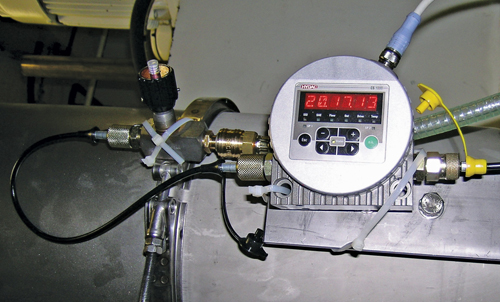I wrote about the ISO 4406 cleanliness code in my last two blogs here and here, and today I’d like to take it a bit further and discuss beta ratios. Beta ratios are important to help us identify the quality of a hydraulic filter element. If using the ISO Code to help identify and specify a target oil cleanliness, then filter efficiency ratings help you achieve that target by knowing how well a given filter media can trap particle contamination.
The beta ratio of a filter element is essentially its efficiency at a specified particle size, and this is important to note. If a filter product sheet simply provides an efficiency number, it’s completely arbitrary because even the worst quality media can filter out 100% of the marbles that pass into it, for example. However, how that filter media performs with 3-µm particles is a completely different story.
A beta ratio is arrived at by testing a filter with the ISO 16889:2008 multi-pass method for evaluating filtration performance. A special ISO certified test dust is added to a closed system including a calibrated electronic particle counter both before and after the test filter. The test is run under specific conditions spelled out in the evaluation procedure, and the particles before the filter are counted and then compared to the particles counted after the filter.

The number of particles counted upstream is divided by the number of particles downstream, which provides the beta ratio for the filter element being tested. There is a bit of math involved, but it’s quite simple. When a beta ratio is expressed, it is always expressed with the particle size the media is designed for. For example, β5 200 means the filter element trapped 200 5-µm particles for every one it let through.
Once you know the beta ratio of a filter, you can calculate how efficient it is at removing that specified particle size. The calculation for efficiency is simply:
(Beta Ratio – 1) ÷ Beta Ratio = Efficiency x 100
Using our above example, we can do the math:
(200 – 1) ÷ 200 = 99.5%
This means that our imaginary filter will remove 99.5% of the 5-µm particles that pass through it. This efficiency, or beta ratio, signifies this is a pretty high quality filter media, meaning it would most likely be synthetic to achieve that result.
When any filter can achieve a beta ratio of around 70 (just above 98% efficiency), we consider it to be an absolute rating. Anything below 98% is considered “nominal,” meaning it will trap an average size of particles of a particular size, but no guarantees. I would consider any nominally rated filter element to be only for the most budget applications. If you care about the longevity of your hydraulic machine, ensure you use only absolute-rated filters.
If β5 200 is a good filter, I consider a β3 2000 to be excellent, with the range of filtration the cleanest hydraulic systems in the world rely on. There is added expense to a higher beta ratio, but I can guarantee the expense isn’t nearly as high as machine failures and hours of downtime on a critical machine.

